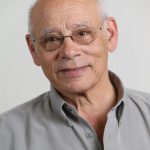Nahum Blass, Chair of the Taub Center Education Policy Program, outlines the sensitive points in the education system, noting, in particular, changes in budget and class size. He also highlights the successes and failures of the system over the past year. Among the achievements, the success of the Druze sector stands out, while failures are evident in special education.
The budget
The education budget for 2024 is 21% larger in relation to the 2022 budget. The most notable changes are in three main areas:
Reserve budget: This budget, intended in part to equalize the funding of recognized unofficial education (mostly composed of Haredi schools) with that of public schools, has nearly doubled from 2022 to 2024.
Special education budget: Increased by 29% due to the rise in the number of students, particularly those with severe disabilities, which are costly to address.
Primary and middle school budgets: Increased by 35%, mainly to cover the costs of the salary agreement with the Teachers’ Union.
Special education
The primary area where the education budget has increased is special education, which grew from NIS 10.9 billion in 2017 to NIS 16 billion in 2022 — a 46% increase compared to a 23% increase in the regular education budget. In relative terms, the portion of the special education budget out of the total education budget rose from 18.7% to 21.4% during these years. The number of special education students in the education system has also increased at a faster rate than the number of students in regular education.
However, despite the significant budget increase, many parents claim there has been no improvement in the services provided to their children. On the other hand, the rapid growth of this system is putting heavy pressure on the Ministry of Education’s budget, raising concerns that it might negatively impact the funds allocated to regular education.
Class size
In 2023, there were almost no primary school classes with more than 36 students, and only 3% of classes had between 32 and 36 students. The vast majority of students, 83% of classes, studied in classes with 24‒32 students: 91% of classes in the Hebrew State education system, 85% in the Hebrew State-religious system, 71% of classes in the Haredi education system, 76% in the Arab State system, 83% in the Bedouin education system, and in the Druze education system, there were no classes with more than 28 students.
In the past decade, there has been no improvement in class sizes in middle schools. In 2023, a third of students still studied in classes with more than 32 students, the same as in 2013. However, it is important to note that in 2000, this figure was 71%. The situation is particularly severe in Hebrew State education, where 59% of classes have more than 32 students, compared to only 14% in State-religious education, 14% in Haredi education, and 15% in Arab education. In Bedouin and Druze education, there are almost no middle school classes with more than 32 students.

Achievements of the Druze sector in Bagrut (matriculation) exams
The Druze sector stands out in the education system, particularly with regard to their achievements on the Bagrut (matriculation) exams. Both the rate of students taking the exams and the rate of those qualifying for a Bagrut certificate are very high in this sector. In the academic year 2020/2021, the qualification rate reached 92.3%. This increase, which occurred within just five years, placed Druze students well above students in the Hebrew State education system and other Arabic-speaking education sectors. Additionally, the Druze sector leads in the percentage of students eligible for a Bagrut certificate with 5-units in mathematics.
This success can be attributed, among other factors, to the high budgets allocated to primary and high school education in the sector, and to the quality of the teachers, nearly half of whom hold a master’s degree.
Recent proposals for reforming the Bagrut exams
The main criticism of the proposed reform of the Bagrut exams, which focuses on canceling the mandatory testing in humanities and social sciences, is that it will devalue these subjects in the eyes of students and might even lead to their being dropped from the curriculum.
Research data indicate a small number of students choosing to be tested at a high level in these subjects, compared to the large number of students choosing to be tested in 5-units of mathematics and English. Even in Bible studies, the only subject that saw an increase in the number of examinees over the past decade, only about 8,000 students were tested at the highest level in 2020, compared to about 16,000 students in 5-units of mathematics and nearly 50,000 in English. The situation is particularly concerning in the subject of civics, with only about 0.3% of students tested at the highest level in that year.


